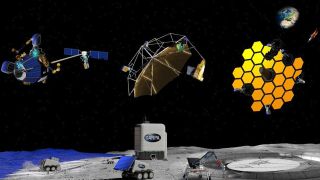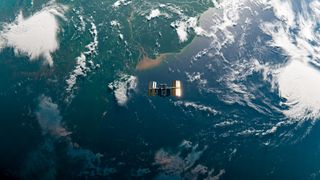Hydrogen in the Limelight at COP28
The high hopes for green hydrogen were apparent at last year’s COP27 summit in Egypt.
COP28 is showing that, while a viable market for ‘green’ hydrogen still appears far from a ‘tipping point’.
An official from the US DOE spoke about $7bn for seven selected ‘hydrogen hubs’, also money for electrolysis development, and a hydrogen tax credit that can extend for up to 10 years at $3 per kilogram.
![]()
The UN’s COP28 climate talks, a mega-conference running for two weeks, are organized around daily themes. The fifth day on Tuesday focused on energy and brought out much high-level discussion of hydrogen.
The high hopes for green hydrogen were apparent at last year’s COP27 summit in Egypt with a flurry of big project announcements. Those have faded from the news as few major projects have reached financial commitment.
Yet the seriousness of discussions in Dubai this week, pursued by top ministry officials and high-level executives, showed that the momentum toward green hydrogen continues to quietly build. This year’s conference lacks the flashy announcements, but it is moving forward with putting the basic structures in place to support a future hydrogen economy.
COP28 is showing that, while a viable market for ‘green’ hydrogen still appears far from a ‘tipping point’, the ongoing activities of companies and governments is a growing force.
President’s roundtable
A ‘High-Level Ministerial-CEO Roundtable on Hydrogen’ convened on Tuesday, sponsored by the COP28 President’s Office, with two hours of talks that cumulatively felt like a hydrogen wave. Ministers from numerous countries described their governments’ initiatives and financial support. An official from the US DOE spoke about $7bn for seven selected ‘hydrogen hubs’, also money for electrolysis development, and a hydrogen tax credit that can extend for up to 10 years at $3 per kilogram.
Then top executives of some 15 companies, members of the Hydrogen Council, spoke of their already significant investments in the emerging sector. Executives from Air Liquide, Air Products, Hy24, Masdar, Next Era Energy, OCI Global, Port of Rotterdam, Topsoe, Thyssenkrupp, and others, called for incentives and clear regulation to enable global trade in the energy-rich element.
These progress reports notwithstanding, the President’s roundtable made its most important statement with the announcement of two rather obscure initiatives. It featured the launch of a ‘Declaration of Intent on Mutual Recognition of Certification Schemes for Hydrogen and Derivatives.’ It also introduced a new ISO methodology for GHG emissions assessment of hydrogen.
Thirty-nine countries have endorsed the Hydrogen Declaration of Intent to pursue mutual recognition of hydrogen certification schemes, according to COP28.
Looking for a breakthrough
Later in the day, another roundtable focused on the basic tasks of putting the hydrogen structure together.
Part of the so-called Breakthrough Agenda that began with COP26 two years ago, it gathered representatives of World Bank, IEA, IRENA, the UN Industrial Development Organization (UNIDO), the International Partnership for Hydrogen and Fuel Cells in the Economy (IPHE), other major non-profits and some governments.
They considered needs in key areas including standards and certification, demand creation, research and innovation, finance and investment. The bright spot, after the morning’s announcements, was standards and certifications.
“We’ve seen standards and certification really rise in the agenda, almost in a surprising way,” said Paul Durant, who is Head of Climate Innovation for the UK government. Mr. Durant chaired the roundtable meeting.
The subsequent discussion of demand creation indicated less certainty, where a huge gap between hydrogen and fossil fuel cost was considered.
“When is comes to demand creation…we are in the very beginning,” said Oleksiy Tatarenko, Senior Principal, Hydrogen Initiatives at Rocky Mountain Institute (RMI), whose large team is working specifically on demand creation. He spoke of the need for combined policy interventions and market-based mechanisms to grow demand for hydrogen.
“We still have a massive challenge, even in the developed countries.
“Making an economic case, sector by sector, you have a gap in hydrogen competitiveness versus carbon fuels or other solutions.”
Hydrogen’s good day
“Today saw a big outcome for hydrogen…we are now putting into place concrete elements to ensure it will happen,” said Laurent Antoni, Executive Director, IPHE, who spoke at both roundtables.
His organization has advocated for years for the ISO methodology and helped to shepherd the declaration on certification schemes to agreement.
“We need to rely on robust regulations, which themselves have to rely on certification, the labelling of hydrogen.
“And within the certification schemes what matters, the main point, is carbon footprint,” he said. He also stressed the importance of the new ISO method to ensure everyone uses precisely the same methodology to quantify the carbon footprint, to allow comparison across markets and borders.
It’s a key common piece needed in all countries’ regulations to facilitate a future hydrogen market. That’s a big breakthrough, he thinks.
Antoni, an electrochemist, won’t talk colours in regard to hydrogen.
“When speaking about a kind of hydrogen, what you’re really speaking about is the carbon footprint,” he said. “And the carbon footprint of the hydrogen is regardless of the primary energy and technology used to produce it.”
“What matters for hydrogen is to use decarbonized hydrogen,” he said. “It’s not a ‘silver bullet’, but without low-emission hydrogen, we won’t achieve our climate targets.”
By Alan Mammoser for Oilprice.com










